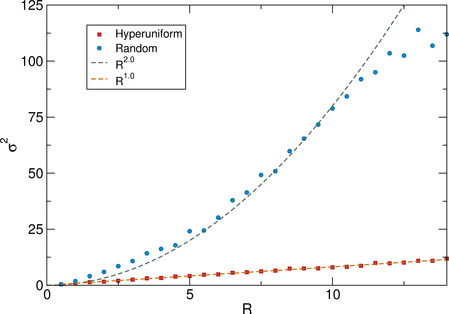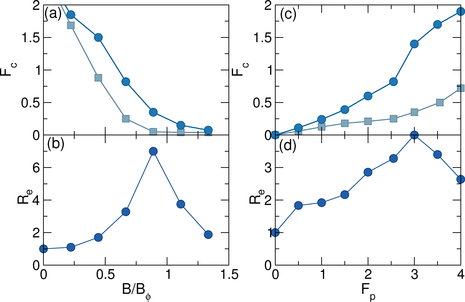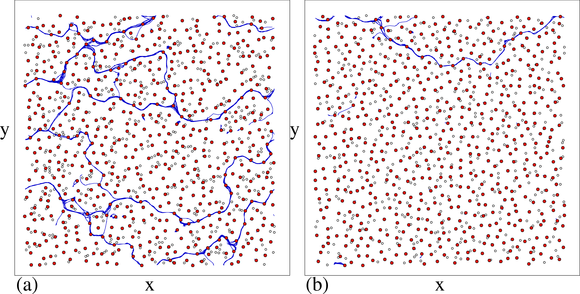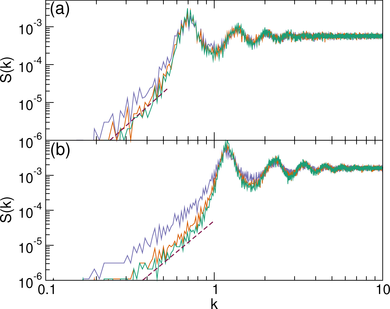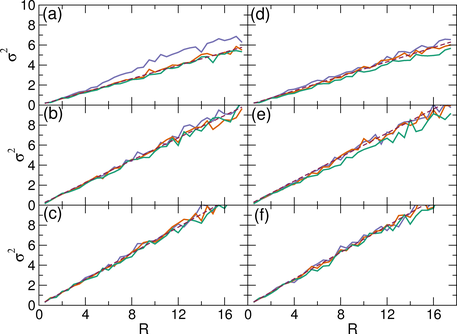 Figure 9:
(a,b,c) σ2 of the vortex positions vs R
at Fp = 0.53 (green), 1.05 (orange) and 2.55 (purple)
for the system in Fig. 7(a,b,c)
with a random pinning array with np=0.7 at
(a) B/Bϕ = 0.6,
(b) B/Bϕ = 1.9,
and (c) B/Bϕ = 2.7.
(d,e,f) σ2 of the vortex positions vs R
at the same Fp values as above
for the system in Fig. 7(d,e,f) with a disordered hyperuniform
pinning array at
(d) B/Bϕ = 0.6,
(e) B/Bϕ = 1.9,
and
(f) B/Bϕ = 2.7.
The dashed brown lines in each panel are fits to
σ2 ∝ Rd−1.
Figure 9:
(a,b,c) σ2 of the vortex positions vs R
at Fp = 0.53 (green), 1.05 (orange) and 2.55 (purple)
for the system in Fig. 7(a,b,c)
with a random pinning array with np=0.7 at
(a) B/Bϕ = 0.6,
(b) B/Bϕ = 1.9,
and (c) B/Bϕ = 2.7.
(d,e,f) σ2 of the vortex positions vs R
at the same Fp values as above
for the system in Fig. 7(d,e,f) with a disordered hyperuniform
pinning array at
(d) B/Bϕ = 0.6,
(e) B/Bϕ = 1.9,
and
(f) B/Bϕ = 2.7.
The dashed brown lines in each panel are fits to
σ2 ∝ Rd−1.
|

